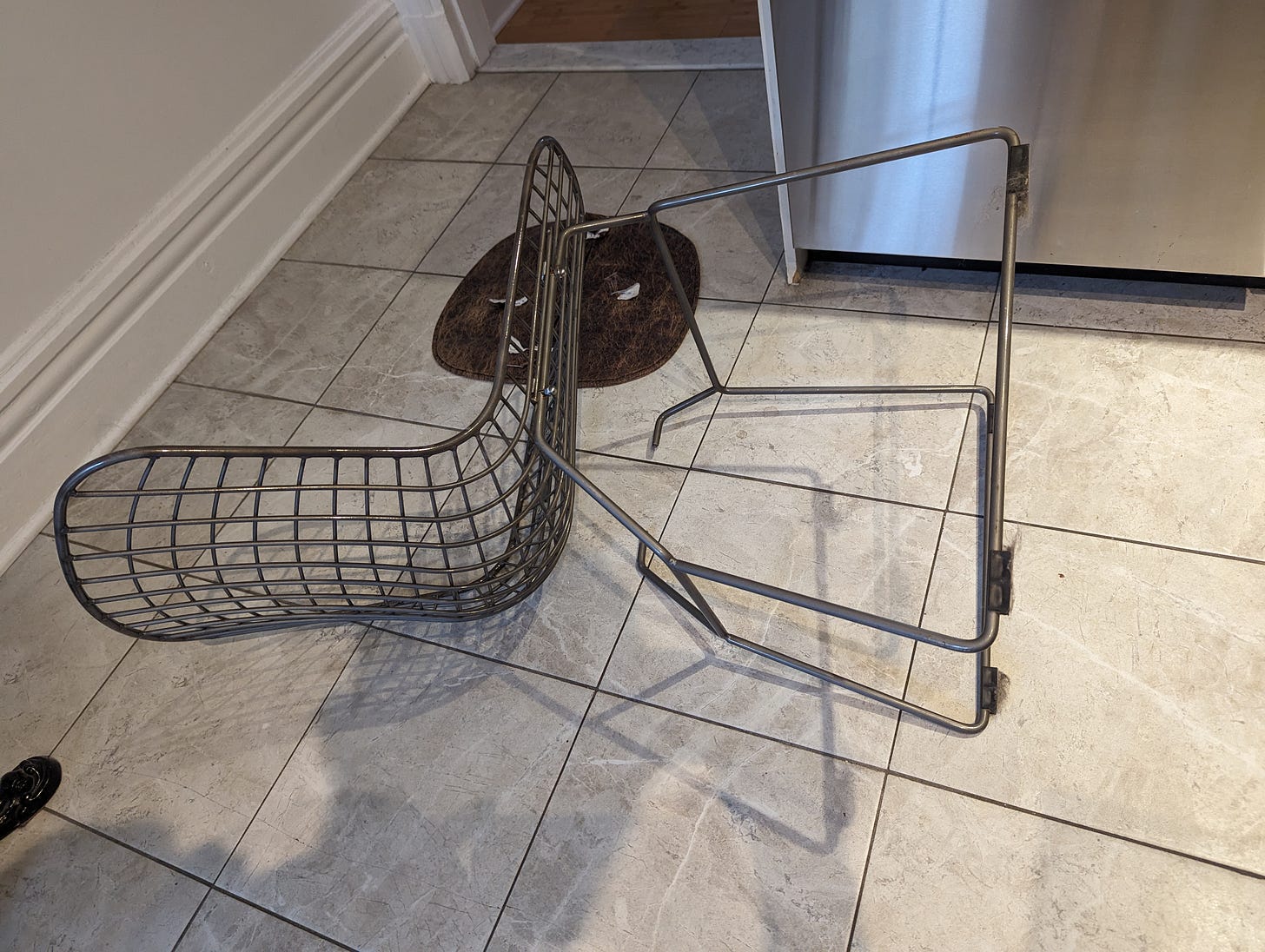The Clunking Chair: A Journey into the World of Quicksand Tasks
Not long ago, while my partner was away in Ottawa, I found myself at home confronted with a seemingly simple task. A clunk from one of our kitchen chairs caught my attention.
Upon inspection, I discovered a loose screw. "I have stuff to do right now, but this will be a quick fix," I thought. But as I delved deeper, the task spiraled. The connecting rod under the chair was chipped, leading to an unexpectedly long and frustrating repair job.
Nearly 90 minutes later, the realization dawned on me: I had fallen prey to a quicksand task.
These tasks, deceptive in their simplicity, often prompt a “Why not? Might as well do it now!” reaction. Yet, they morph into time-consuming endeavors, trapping us in a cycle of increasingly frustrating steps.
What are Quicksand Tasks?
Quicksand tasks are deceptive. They appear urgent, simple, and quick – the perfect candidates for immediate action.
However, once engaged, they expand, consuming more time and energy than anticipated, much like the treacherous nature of quicksand.
A few examples:
Home Repairs: Similar to the kitchen chair scenario, home repair tasks like fixing a leaky faucet or a squeaky door can evolve into more complex projects. What appears to be a simple tightening of a bolt might reveal a need for new parts or even professional help.
Software Updates or Troubleshooting: Updating software or resolving a minor computer issue can unexpectedly lead to discovering more significant problems, compatibility issues, or lengthy installation processes.
Researching a Minor Purchase: Suppose you decide to buy a new office chair or a kitchen appliance. The task begins with a simple online search but can soon expand into reading countless reviews, comparing prices across different websites, and watching review videos, taking up much more time than planned.
Understanding the Sunk-Time Effect in Quicksand Tasks
Research sheds light on why we get ensnared in these tasks. It’s all about the sunk-time effect1. This phenomenon occurs when we continue a task simply because we've already invested time in it, regardless of the current costs or benefits.
In the case of the chair, each minute I spent fixing it compounded my commitment to finish, even as the task grew in complexity and frustration. It’s the time equivalent of the expression “throwing good money after bad.”
The Courage to Let Go: Overcoming the Effort-Justification Trap
In the face of quicksand tasks, one of the most crucial yet challenging things to learn is the art of letting go. The common belief of "I started this, so I must finish it," often clouds our judgment, overshadowing a more important consideration: Are there activities more deserving of our attention right now? This predicament is often deepened by the sunk-time effect, particularly when intertwined with the effort-justification mechanism.
The Sunk-Time Effect and Effort-Justification
While the sunk-time effect explains our tendency to continue with tasks because of the time already invested, the concept of effort-justification adds another layer to this phenomenon. When we engage in demanding tasks, we experience dissonance, especially if these tasks are effortful and unenjoyable.
To resolve this dissonance, we often inflate the desirability of the task's outcome, proportionally to the amount of effort we've put in2. This effort-justification process can make us perceive the task as more valuable, simply because we have invested significant effort into it, leading to a deeper entrapment in quicksand tasks.
Embracing Time's Limit and Reassessing Effort
Understanding that our time is finite and recognizing the traps of the sunk-time effect and effort-justification are essential steps in breaking free from the hold of quicksand tasks. Strough and colleagues’ research suggests that understanding our time as limited helps us make more rational decisions about our time investments3, focusing on tasks with greater future benefits rather than those into which we've sunk considerable effort
How to Break Free from the Quicksand
Understand Your Time Is Limited: A vital step in breaking free from the grip of quicksand tasks is recognizing the finite nature of our time. Research shows we are less susceptible to the sunk-time fallacy. This mindset shift encourages us to make more rational decisions about how we invest our time, focusing on tasks that offer the most significant future benefits
Evaluate the True Scope of the Task: Before diving in, realistically assess the task’s full extent. This foresight can prevent you from getting mired in unexpectedly complex tasks.
Acknowledge the Sunk-Time Fallacy and Embrace Time's Limit: Understand the trap of continuing a task just because you've already invested time in it. Remind yourself that time is a limited resource and that every minute spent on a non-fruitful task is a minute lost.
Set Clear Boundaries: Decide in advance how much time you are willing to dedicate to a task. If it begins to exceed this limit, give yourself permission to step back and reevaluate.
Schedule It for Later - Embrace 'Everything in Due Time': Not every task needs to be completed immediately. Sometimes, the best approach is to schedule it for a later time. This mindset, “everything in due time,” ensures that you address tasks at a more appropriate moment, without overwhelming your current schedule. It helps in prioritizing tasks that are more urgent or important, keeping you aligned with your priorities and reducing the stress of trying to do too much at once.
Final Thoughts: Mastering the Art of Time
Quicksand tasks are a common pitfall, but by understanding their nature and our psychological inclinations, we can navigate our days more effectively. It's about more than avoiding time-wasters; it's about investing our time wisely and with intention. Remember, when you face a seemingly small task, take a moment to consider: Is this task truly worth your finite, precious time, or are you stepping into quicksand?
Navarro, A. D., & Fantino, E. (2009). The sunk-time effect: An exploration. Journal of Behavioral Decision Making, 22(3), 252–270. https://doi.org/10.1002/bdm.624
Cunha, Jr, M., & Caldieraro, F. (2009). Sunk‐Cost Effects on Purely Behavioral Investments. Cognitive Science, 33(1), 105–113. https://doi.org/10.1111/j.1551-6709.2008.01005.x
Strough, J., Schlosnagle, L., Karns, T., Lemaster, P., & Pichayayothin, N. (2014). No Time to Waste: Restricting Life-Span Temporal Horizons Decreases the Sunk-Cost Fallacy. Journal of Behavioral Decision Making, 27(1), 78–94. https://doi.org/10.1002/bdm.1781








